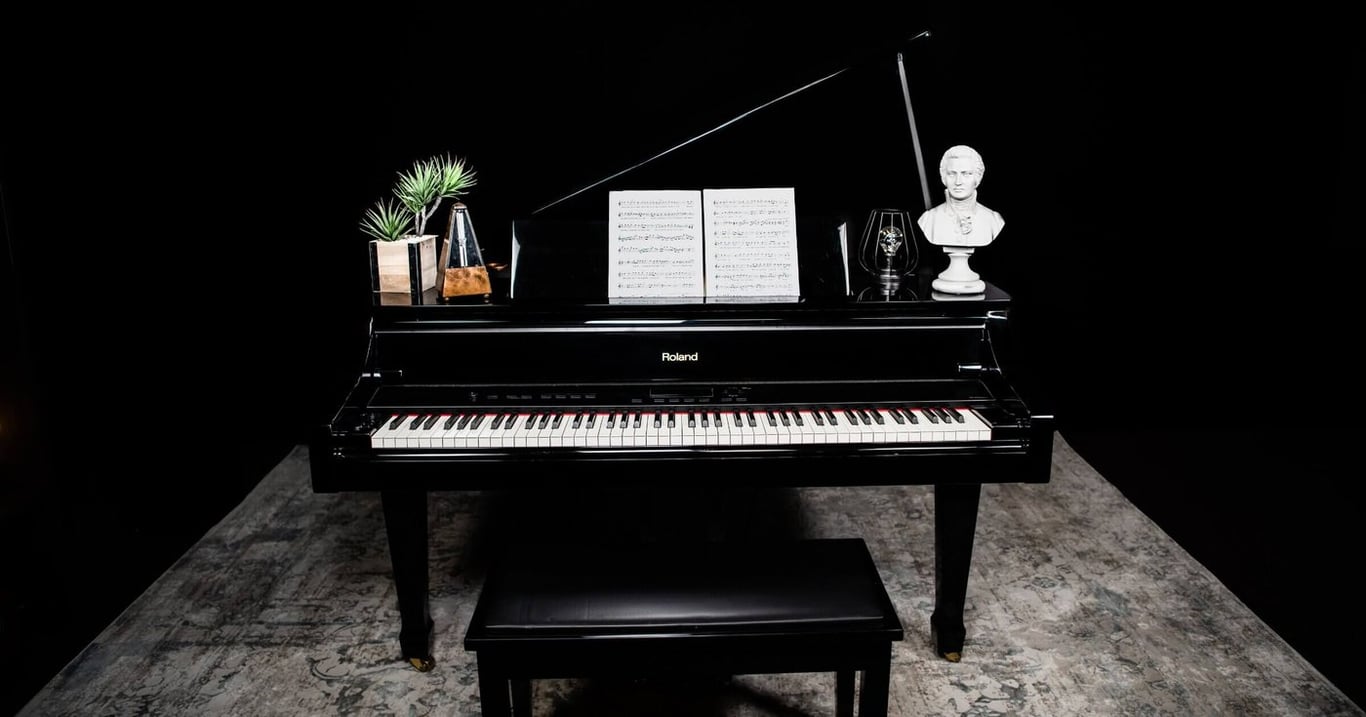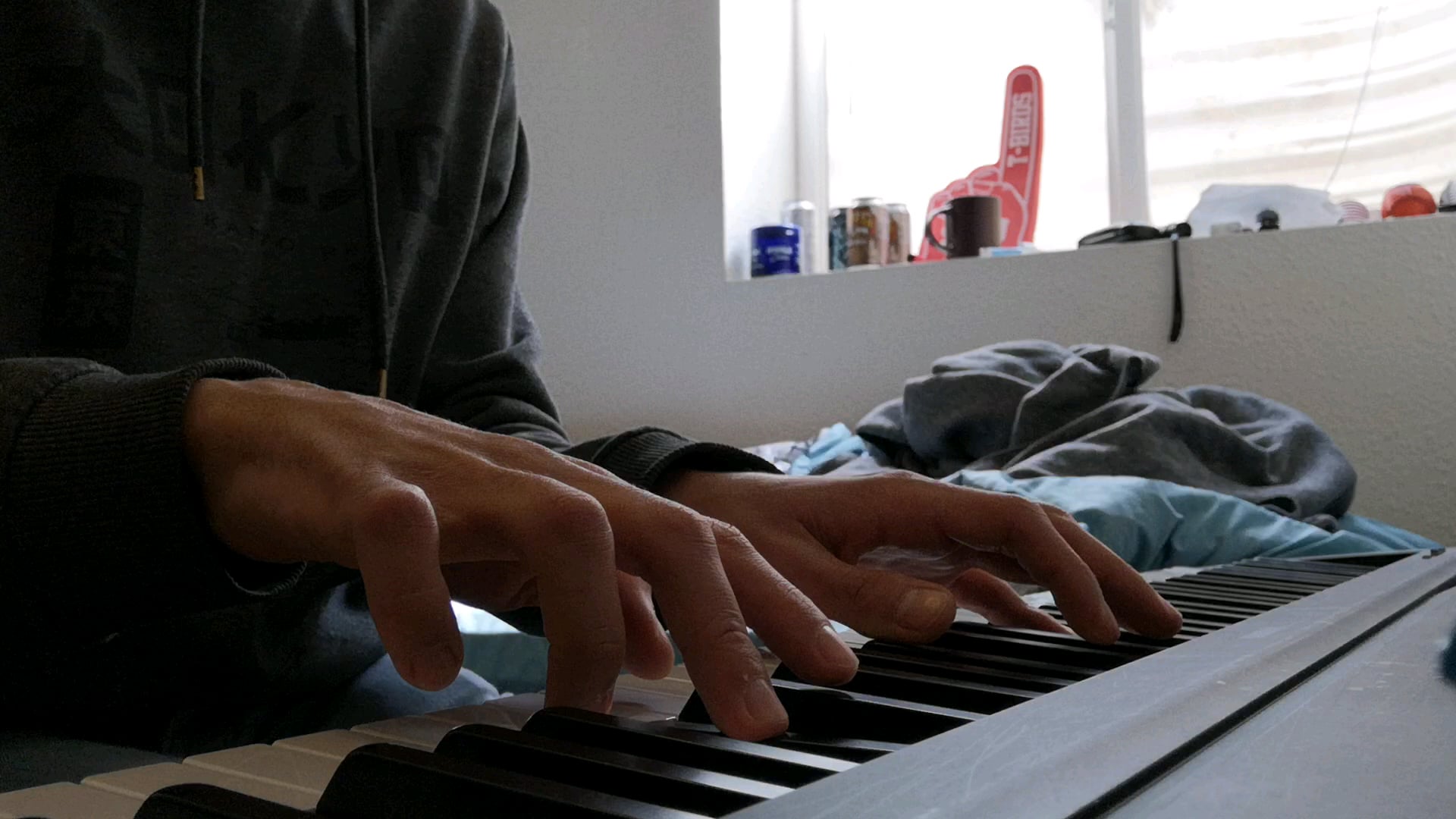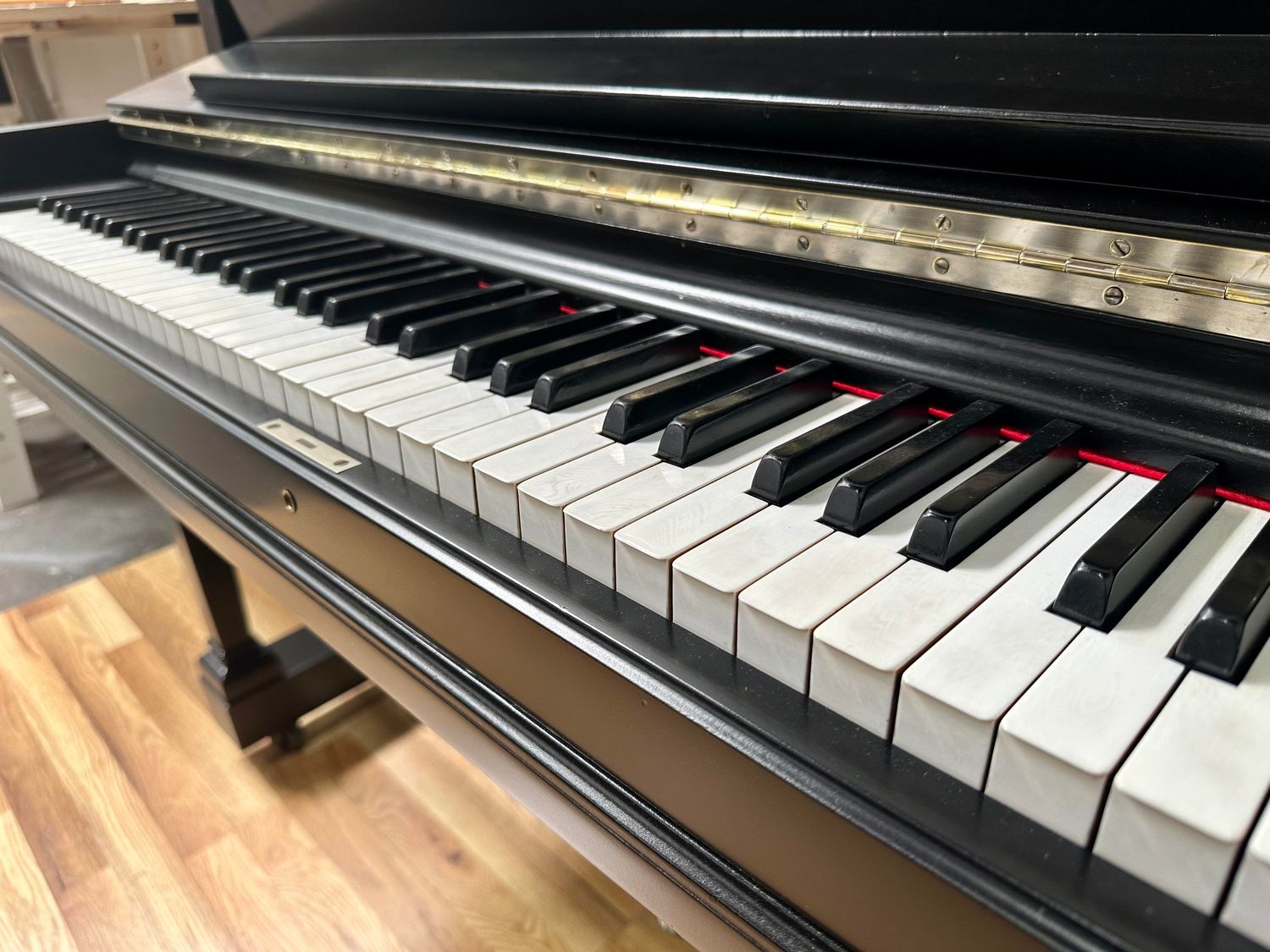Home>Instruments>Piano>How To Play Am7 On Piano


Piano
How To Play Am7 On Piano
Published: February 10, 2024
Learn how to play the Am7 chord on the piano with our step-by-step guide. Master the piano and impress your audience.
(Many of the links in this article redirect to a specific reviewed product. Your purchase of these products through affiliate links helps to generate commission for AudioLover.com, at no extra cost. Learn more)
Table of Contents
Introduction
Welcome to the enchanting world of piano music! Whether you are a novice or a seasoned pianist, mastering new chords can elevate your playing to new heights. In this article, we’ll delve into the captivating realm of the Am7 chord and explore how to play it on the piano.
The Am7 chord, also known as A minor 7, is a versatile and emotive chord that adds depth and richness to musical compositions. It is a fundamental chord in various musical genres, including jazz, pop, and classical music. Understanding how to play the Am7 chord on the piano opens the door to a myriad of musical possibilities, allowing you to infuse your playing with soul-stirring melancholy or uplifting warmth.
As we embark on this musical journey, we’ll unravel the intricacies of the Am7 chord, discover the finger positions required to play it on the piano, and explore effective practice tips to help you master this evocative chord. Whether you’re yearning to expand your musical repertoire or seeking to deepen your understanding of piano chords, the Am7 chord is a captivating addition to your musical arsenal.
Understanding the Am7 Chord
Before diving into the technical aspects of playing the Am7 chord on the piano, it’s essential to grasp the theoretical foundation of this evocative chord. The Am7 chord is constructed from the A minor scale, infusing it with a melancholic yet serene quality that resonates deeply with listeners.
The Am7 chord comprises four notes: A, C, E, and G. These notes form the root, minor third, perfect fifth, and minor seventh of the chord, respectively. When played together, these notes create a harmonious blend that evokes a sense of introspection and emotional depth.
One of the defining characteristics of the Am7 chord is its versatility. It seamlessly integrates into various musical contexts, adding a touch of sophistication and emotional resonance to compositions. Whether used as a standalone chord or as part of a chord progression, the Am7 chord possesses a captivating allure that captivates audiences and musicians alike.
Furthermore, the Am7 chord serves as a cornerstone in jazz and blues music, where its expressive qualities are harnessed to convey a spectrum of emotions, from wistful nostalgia to fervent yearning. Its presence in popular music is equally prominent, as it infuses ballads and acoustic arrangements with a hauntingly beautiful aura.
Understanding the harmonic structure and emotional nuances of the Am7 chord lays a solid foundation for its expressive rendition on the piano. As we venture into the realm of playing the Am7 chord, this theoretical comprehension will enrich our musical exploration, allowing us to convey poignant emotions through our piano performance.
Playing the Am7 Chord on the Piano
Now that we’ve delved into the theoretical underpinnings of the Am7 chord, let’s embark on the practical journey of playing this captivating chord on the piano. Mastering the Am7 chord unlocks a world of expressive possibilities, enabling pianists to infuse their music with emotive depth and harmonic richness.
To play the Am7 chord on the piano, you’ll need to position your fingers strategically to produce a seamless and resonant sound. The notes comprising the Am7 chord are A, C, E, and G, and arranging these notes effectively is instrumental in achieving a compelling rendition of the chord.
Begin by placing your right thumb on the A note, which is located to the left of the group of two black keys. Next, position your middle finger on the C note, followed by your ring finger on the E note, and finally, place your little finger on the G note. This formation results in a harmonious alignment of the chord’s constituent notes, producing a poignant and evocative sound when played together.
When playing the Am7 chord, it’s crucial to maintain a relaxed posture and gentle touch, allowing the notes to resonate organically and meld into a cohesive sonic tapestry. Take a moment to ensure that each finger exerts the appropriate pressure on the keys, striking a balance between clarity and warmth in the chord’s timbre.
As you immerse yourself in the process of playing the Am7 chord, pay close attention to the fluidity of your finger movements and the seamless transition between notes. Cultivating a fluid and graceful execution of the chord enhances its expressive potential, enabling you to convey a spectrum of emotions through your piano performance.
Whether you’re crafting a soulful ballad, embellishing a jazz composition, or exploring the introspective allure of the A minor scale, the Am7 chord serves as a versatile and indispensable tool in your musical repertoire. Embrace the nuances of this chord, allowing its emotive resonance to permeate your musical expression and captivate the hearts of your audience.
Practice Tips for Mastering the Am7 Chord
Embarking on the journey to master the Am7 chord requires dedication, patience, and strategic practice techniques. By incorporating the following tips into your practice routine, you can enhance your proficiency in playing the Am7 chord and unlock its expressive potential on the piano.
- Finger Dexterity Exercises: Engage in finger dexterity exercises to strengthen and limber your fingers, facilitating greater agility and precision when playing the Am7 chord. Scales, arpeggios, and finger independence drills are invaluable for honing your dexterity and coordination.
- Chord Progression Integration: Incorporate the Am7 chord into various chord progressions to familiarize yourself with its harmonic interactions and tonal relationships. Experiment with transitioning smoothly between the Am7 chord and complementary chords, expanding your musical fluency and adaptability.
- Dynamic Expression: Explore the dynamic range of the Am7 chord by varying the intensity and touch of your keystrokes. Practice playing the chord softly to convey a delicate, introspective ambiance, and then experiment with infusing it with heightened intensity to evoke poignant emotions.
- Metronome Practice: Utilize a metronome to refine your rhythmic precision when playing the Am7 chord. Set a moderate tempo and practice maintaining a steady rhythm while transitioning between the Am7 chord and other chords, fostering a solid sense of timing and cadence.
- Chord Voicing Exploration: Experiment with different voicings and inversions of the Am7 chord across the piano keyboard. By exploring alternative fingerings and voicings, you can uncover unique tonal textures and expand your creative palette when incorporating the Am7 chord into your compositions.
- Emotional Connection: Cultivate an emotional connection with the Am7 chord by infusing your playing with sincerity and introspection. Reflect on the evocative qualities of the chord and imbue your performance with genuine emotion, allowing your musical expression to resonate authentically with your audience.
Consistent and deliberate practice, coupled with a spirit of curiosity and artistic exploration, will empower you to harness the full expressive potential of the Am7 chord. Embrace the nuances of this captivating chord, and let its emotive resonance enrich your musical journey as a pianist.
Conclusion
As we conclude our exploration of the Am7 chord and its manifestation on the piano, we have unveiled the captivating allure and expressive potential of this evocative chord. From its theoretical underpinnings to its practical rendition on the piano, the Am7 chord embodies a profound emotional resonance that enriches musical compositions and performances.
By understanding the harmonic structure and emotional nuances of the Am7 chord, pianists can infuse their playing with soul-stirring melancholy, uplifting warmth, and a myriad of emotions in between. The versatility of the Am7 chord transcends musical genres, making it a foundational element in jazz, pop, classical, and beyond.
Mastering the Am7 chord demands dedication, patience, and a spirit of artistic exploration. Through strategic practice techniques, such as finger dexterity exercises, chord progression integration, and dynamic expression, pianists can elevate their proficiency in playing the Am7 chord and unlock its full expressive potential.
As you continue your musical journey, embrace the emotive resonance of the Am7 chord, allowing its poignant qualities to permeate your musical expression and captivate the hearts of your audience. Whether you’re crafting introspective ballads, embellishing jazz compositions, or exploring the evocative allure of the A minor scale, the Am7 chord stands as a versatile and indispensable tool in your musical repertoire.
May the enchanting harmonies of the Am7 chord inspire your creativity, deepen your musical fluency, and imbue your performances with profound emotional depth. As you immerse yourself in the evocative world of piano music, let the Am7 chord serve as a poignant companion, enriching your musical odyssey with its timeless allure.











